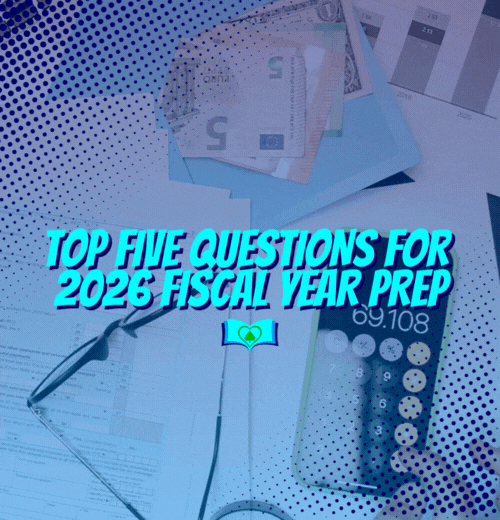Preparing for a new fiscal year requires more than repeating last year’s approach. For 2026, nonprofits need to anticipate challenges, seize opportunities, and align financial resources with mission impact. The best way to do this is to focus on the most common questions leaders ask about future financial planning.
Below are the top five questions nonprofits should ask when preparing for FY2026, with detailed insights and practical steps.
1. How can we create reliable financial forecasts for FY2026?
Forecasting provides a flexible, forward-looking picture of your financial health.
- Start with historical data
- Review the last 3–5 years of revenue and expense trends.
- Look for seasonal fluctuations, donor retention rates, and program costs.
- Factor in external influences
- Inflation rates, grant renewal cycles, government funding changes.
- Donor behavior shifts (e.g., younger donor preferences, online giving trends).
- Build multiple scenarios
- Best-case (e.g., securing new grants, higher donor engagement).
- Worst-case (e.g., reduced donations, rising operating costs).
- Most-likely (based on historical averages and current conditions).
- Update frequently
- Adjust forecasts quarterly or semi-annually.
- Use updated financial data to refine assumptions.
2. What financial goals should we set, and how do we make them measurable?
Financial goals should turn your forecast into an actionable strategy.
- Apply the SMART framework (Specific, Measurable, Achievable, Relevant, Time-bound).
- Examples of measurable FY2026 goals:
- Increase unrestricted revenue by 15% by December 2026.
- Grow reserve funds to cover three months of operating expenses.
- Reduce administrative expenses by 5% without reducing program effectiveness.
- Secure two multi-year grants to diversify funding.
- Link goals directly to mission priorities
- Ensure each financial target advances program outcomes.
- Use goals to communicate impact to stakeholders and funders.
3. How do we prepare a budget that supports both stability and growth?
A well-prepared budget reflects both operational needs and strategic ambitions.
- Start with the forecast
- Use the most-likely scenario as the base for budget development.
- Prioritize resources
- Protect mission-critical programs and core operations.
- Dedicate funds to innovation and capacity-building.
- Plan for contingencies
- Set aside reserves for unexpected expenses.
- Incorporate flexible funding categories.
- Engage leadership and staff
- Involve department heads in the budgeting process for accuracy.
- Present a clear, mission-aligned budget to the board for approval.
4. How often should we revisit and adjust forecasts and budgets?
Static budgets often fail to capture changing realities.
- Forecasts
- Update quarterly to reflect actual performance and external changes.
- Share adjustments with leadership and the board to maintain transparency.
- Budgets
- Incorporate budget figures into monthly reporting for variance analysis
- Revisit mid-year to address any significantly incorrect assumptions
- Why frequent review matters
- Keeps leadership nimble in responding to funding shifts.
- Builds funder confidence in your financial management.
- Prevents surprises that could derail programs.
5. How can forecasting and goal setting strengthen our nonprofit’s mission?
Financial planning should never feel separate from your mission—it is a tool to amplify impact.
- Forecasting ensures sustainability
- Anticipates risks before they disrupt programming.
- Helps secure funding by demonstrating financial foresight.
- Goal setting drives accountability
- Connects financial targets to program outcomes.
- Provides benchmarks for progress reporting.
- Budgets demonstrate stewardship
- Show donors and funders that resources are allocated responsibly.
- Highlight investment in both current needs and long-term growth.
- Mission alignment builds resilience
- Ensures every financial decision supports organizational values and strategy.
FAQ
Q: What’s the difference between a forecast and a budget?
- Forecast: A projection of likely outcomes, updated regularly.
- Budget: A plan with spending and revenue targets, approved annually.
Q: Should small nonprofits invest time in multi-scenario forecasting?
- Yes. Even simple best-case and worst-case models help anticipate uncertainty.
Q: How do we ensure financial goals are realistic?
- Ground them in historical performance.
- Align them with staffing and fundraising capacity.
- Test them against multiple forecast scenarios.
Q: What role does the board play in planning?
- Oversight of financial assumptions.
- Approval of budgets and major goals.
- Strategic input into growth and sustainability decisions.
Q: How do we balance caution with growth in budgeting?
- Maintain reserves to weather risks.
- Dedicate a portion of funds to new initiatives.
- Evaluate impact of each investment on mission advancement.
